Sagittarius is one of the largest constellations in the southern sky and is easy to find because it lies on the Milky Way. Its brightest stars form an asterism known as the Teapot. The constellation also contains the Arches Cluster and the Quintuplet Cluster with the luminous Pistol Star. It also contains famous deep sky objects such as Barnard’s Galaxy, Sagittarius Dwarf Elliptical Galaxy and Sagittarius Dwarf Irregular Galaxy.
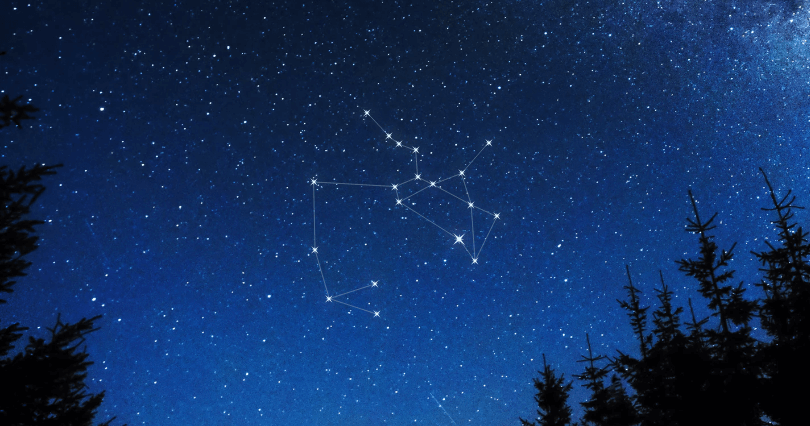
There are seven stars brighter than magnitude 3.00 in Sagittarius. The brightest star is Kaus Australis, with an apparent magnitude of 1.79. Also, there are three stars located within 10 parsecs (32.6 light years) of Earth. The nearest star being Ross 154, which is only 9.69 light years from Earth.
There are 17 named stars in Sagittarius. The names, officially approved by the International Astronomical Union (IAU), are: Ainalrami, Albaldah, Alnasl, Arkab Posterior, Arkab Prior, Ascella, Belel, Gumala, Kaus Australis, Kaus Borealis, Kaus Media, Nunki, Pincoya, Polis, Rukbat, Sika and Terebellum.
There are also 32 stars with confirmed planets.
Sagittarius contains 15 Messier objects: Messier 8, Messier 17, Messier 18, Messier 20, Messier 21, Messier 22, Messier 23, Messier 24, Messier 25, Messier 28, Messier 54, Messier 55, Messier 69, Messier 70 and Messier 75. There are no meteor showers associated with Sagittarius.
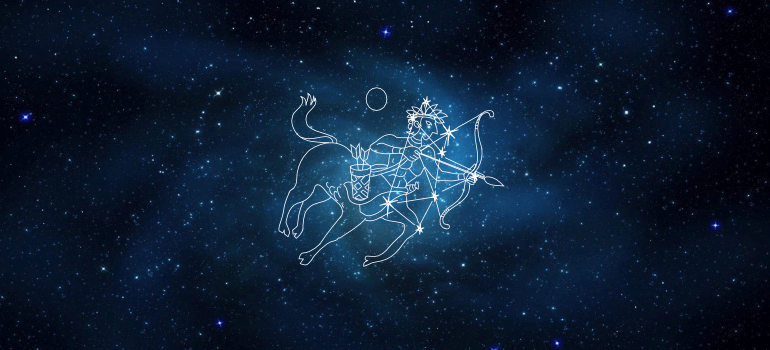
History and Mythology Of The Sagittarius Constellation
Sagittarius is one of the 12 zodiac constellations that was first catalogued by the Greek astronomer Ptolemy in the 2nd century.
In mythology, Sagittarius represents a centaur, which is a half human, half horse creature with the torso of a man and the body and four legs of a horse. The centaur of the Sagittarius constellation is depicted as aiming an arrow toward the heart of the neighbouring Scorpio, which is represented by the red supergiant star Antares.
Some identify Sagittarius as the centaur Chiron, the son of Philyra and Cronus, who was said to have changed himself into a horse to escape his jealous wife, Rhea, and tutor to Jason. However, as there are two centaurs in the sky, some identify Chiron with the other constellation, known as Centaurus.
Location Of The Sagittarius Constellation
Sagittarius is the 15th largest constellation in the sky, occupying an area of 867 square degrees. It is located in the fourth quadrant of the southern hemisphere (SQ4) and can be seen at latitudes between +55° and -90°.
Its right ascension is 19h and its declination is −25°. It is best seen at 9pm during the month of August. The center of the Milky Way lies in the westernmost part of Sagittarius. It is also one of the prominent features of the summer skies in the northern hemisphere.
The neighboring constellations of Sagittarius are Aquila, Capricornus, Corona Australis, Indus, Microscopium, Ophiuchus, Scutum, Scorpius, Serpens Cauda and Telescopium. It also belongs to the Zodiac family of constellations, along with Aries, Taurus, Gemini, Cancer, Leo, Virgo, Libra, Scorpius, Capricornus, Aquarius and Pisces.
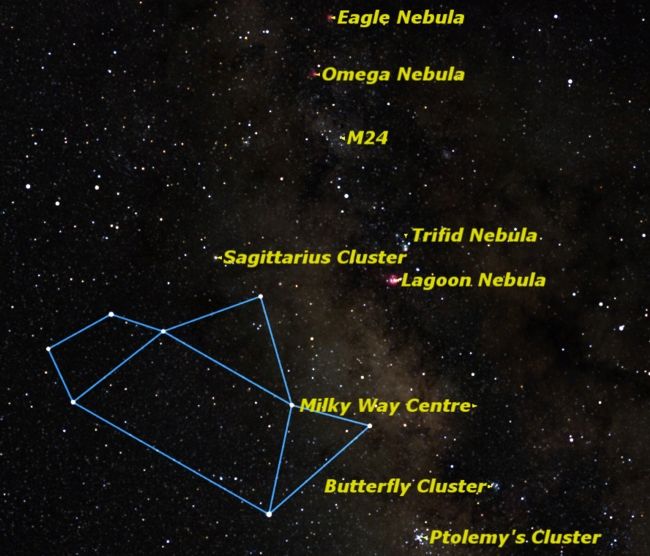
Notable Stars
The constellation of Sagittarius contains many notable stars, including seven stars brighter than magnitude 3.00.
Kaus Australis
Kaus Australis, also known as Epsilon Sagittarii is the brightest star in the constellation Sagittarius and the 36th brightest star in the sky. It is a binary star that is a blue class B giant. This star has an apparent magnitude of 1.79 and a luminosity 375 times that of the Sun. It also has a faint 14th magnitude companion 32 arc seconds away.
Kaus Australis is located around 143 light years away from us. With stars Delta and Lambda Sagittarii, it makes up the archers bow, making the base. Its name comes from the Arabic word for “bow” (qaws) and the Latin word for “southern” (australis).
Nunki
Nunki, also known as Sigma Sagittarii, is the second brightest star in the constellation Sagittarius, with an apparent magnitude of 2.1. It is a hydrogen fusing dwarf star that belongs to the spectral type B2.5 V. It is located around 228 light years away from Earth.
Nunki has a luminosity that is around 3,300 times that of the Sun and a mass that is around 7 times that of the Sun. Nunki is a fast rotator, spinning at more than 200 kilometres per second, which is about 100 times faster than the Sun. The star also has a faint companion with a magnitude of 9.5. It is located around 5.2 arc minutes away.
Sigma Sagittarii is located close to the eclipic and it can sometimes be occulted by the Moon and, very rarely, by planets. It is also known for being the brightest star that can be occulted by an exterior planet.
It is unknown where the name Nunki comes from, but it is thought to be of either Babylonian or Assyrian origin.
Ascella
Ascella, also known as Zeta Sagittarii, is the third brightest star in the constellation of Sagittarius. It is a binary star consists of a class A2 giant star with an apparent magnitude of 3.26 and an A4 type subgiant star with an apparent magnitude of 3.37. The two stars are separated by 13.4 astronomical units and they have a combined apparent magnitude of 2.60. There is also a dim companion 75 arc seconds away that is a 10th magnitude star.
Ascella is located around 89.1 light years from Earth. Its name means “armpit” in Latin.
Kaus Media
Kaus Media, also known as Delta Sagittarii, is a multiple star system that has an apparent magnitude of 2.72. It belongs to the spectral type K3III and is located around 306 light years away.
Delta Sagittarii is around 1180 times more luminous than the Sun and has a radius that is 62 times that of the Sun and a mass that is five times that of the Sun. The primary component also has three dim companions: Delta Sagittarii B, a 14th magnitude star 26 arc seconds away, Delta Sagittarii C, a 15th magnitude star 40 arc seconds away, and Delta Sagittarii D, a 13th magnitude star 58 arc seconds away.
The name Kaus Media means “the middle bow”.
Kaus Borealis
Kaus Borealis, also known as Lambda Sagittarii, is an orange giant star, belonging to the spectral class K1+IIIb. It marks the handle of Teapot asterism in Sagittarius and points to the famous interstellar cloud, the Lagoon Nebula. Its name means “the northern bow”.
Lambda Sagittarii has an apparent magnitude of 2.82, making it 52 times more luminous than the Sun. It also has a radius that is 11 times that of the Sun and is around 77.3 light years away from us.
Kaus Borealis is sometimes refer to as a clump star, meaning that it is one undergoing the final stages of its existence, but is stable nevertheless and fusing helium into carbon and oxygen in its core. It also lies very close to the ecliptic, is occasionally occulted by the Moon and, more rarely, by planets.
Rukbat
Rukbat, also known as Alpha Sagittarii, is a blue dwarf belonging to the spectral class B8V, with an apparent magnitude of 3.97. It is located around 170 light years away from us.
Rukbat is believed to have a debris disk and is emitting an excess flux of X-rays, possibly because its companion star is still in the pre-main sequence stage.
It shares its name Rukbat with the star Delta Cassiopeiae. The name is derived from the Arabic word rukbah, which means “knee”.
Arkab
Arkab, also known as Beta Sagittarii, is the name shared by two star systems that lie 0.36° apart in the sky — Beta-1 Sagittarii and Beta-2 Sagittarii. The name comes from the Arabic carqūb, which means “hamstring”.
Beta-1 Sagittarii, also known as Arkab Prior because it leads Beta-2 across the sky, is a double star that belongs to the spectral type B9V. It is around 378 light years away from us. The primary component, Arkab Prior A, is a B9 type main sequence dwarf with an apparent magnitude of 3.96, while the companion star, Arkab Prior B, is a class A3 dwarf with an apparent magnitude of 7.4. The two components are 28 arc seconds apart.
Beta-2 Sagittarii, also known as Arkab Posterior, is a giant star that belongs to the spectral type F2III. It is located 137 light years away from us and has an apparent magnitude of 4.27.
Phi Sagittarii
Phi Sagittarii is one of the stars that form the Teapot asterism, marking the junction of the handle and the lid of the teapot. It is a B8 class giant with an apparent magnitude of 3.17. It is around 231 light years from Earth.
Albaldah
Albaldah, also known as Pi Sagittarii, is a triple star system that belongs to the spectral class F2II. It has an apparent magnitude of 2.88 and is around 440 light years away from us. The primary star has two companions; Pi Sagittarii B 0.1 arc seconds away and Pi Sagittarii C 0.4 arc seconds away.
Albaldah is near the ecliptic and can occasionally be occulted by the Moon and planets. Its name from the Arabic bálda, which means “the town”.
Alnasl (Nushaba)
Alnasl, also known as Nushaba or Gamma Sagittarii, is a K type (K0III) giant star. It is located 96.1 light years away from us and has an apparent magnitude of 2.98. The name Alnasl comes from the Arabic al-naşl which means “arrowhead” and the name Nushaba is derived from Zujj al-Nashshaba, which means the same thing.
Tau Sagittarii
Tau Sagittarii is one of the stars that mark the handle of the Teapot asterism. It is an orange giant star belonging to the spectral type K1 or K2 with an apparent magnitude of 3.32. It is also a suspected binary star, even though a companion has never been confirmed. Tau Sagittarii is located 120 light years away from Earth.
Sephdar (Ira Furoris)
Sephdar, also known as Ira Furoris or Eta Sagittarii, is a multiple star system that is located around 149 light years away. The primary component is a type M3.5 red giant classified as an irregular variable star that has an apparent magnitude that varies from 3.08 to 3.12.
The brightest companion star is an F class dwarf with an apparent magnitude of 7.77. It is located around 3.6 arc seconds from the primary star. There is another companion that is of the 13th magnitude located 33 arc seconds away, and the faintest star is a 10th magnitude star that is separated from the brightest star by 93 arc seconds.
Around the year 6300, the Sephdar system will have moved from Sagittarius to the Corona Australis constellation.
Pistol Star
The Pistol Star is a blue variable star that is one of the most luminous stars known. It is about four million times as luminous as our Sun and 120-200 times as massive. It is located around 25,000 light years from our Solar System and is in the Galactic center region. Despite its distance, it would be a fourth magnitude star and visible to the naked eye if the interstellar dust was not in the way. It is named after the Pistol Nebula which it illuminates.
Peony Star
The Peony Star, also know as WR 102ka, is one of the most luminous stars known in our galaxy. It is a Wolf-Rayet star with an absolute magnitude of -11.5. The Peony Star is located 26,100 light years from Earth.
It is thought to be around 3.2 million times more luminous than the Sun, but thanks to dust it is heavily obscured and this in uncertain. It has to be observed in infrared wavelengths. The Peony Star has an estimated mass of about 100 solar masses and a radius 92 times solar, and is thought to be less than 3 million years old.
VX Sagittarii
VX Sagittarii is one of the five largest known stars in the Milky Way. It is an evolved red supergiant or hypergiant that is classified as a semiregular variable of the SRc type, with an apparent magnitude that varies from 6.5 to 14.0 over a period of 732 days. This star is located around 5,150 light years from Earth.
It has a radius that is between 1,350 and 1,940 times that of the Sun and its mass is 12 times that of the Sun. The temperature of VX Sagittarii also varies between 2,500 K to 3,500 K.
Sakurai’s Object
Sakurai’s Object, also known as V4334 Sagittarii, was originally a white dwarf but swelled into a red giant as a result of a late thermal pulse and is expected to evolve back into a white dwarf. It lies at the center of a planetary nebula, formed after the star’s red giant stage about 8,300 years ago.
It was first discovered in 1996 by Yukio Sakurai and was first believed to be a magnitude 11.4 slow nova because it had not been visible before. In 1999, the star became invisible in optical wavelengths because it was obscured by a very thick shell of dust. In the next few decades, its final helium flash is expected to take place.
KW Sagittarii
KW Sagittarii is a red supergiant and one of the largest known stars. It has an apparent magnitude that varies between 8.5 and 11 and has a diameter that is 1,460 times that of the Sun. It is located around 10,000 light years from Earth.
Polis
Polis, also known as Mu Sagittarii, is a multiple star system located around 3,912 light years away from Earth. It has individual components designated Polis A through Polis E, with the primary component in the star system a class B giant, 23 times as massive as the Sun and 180,000 times more luminous.
Polis A is an eclipsing binary star, with a B8 supergiant star for a primary component and a B2 type giant as the companion star, and an apparent magnitude that ranges from 3.84 to 3.96.
The name Polis comes from the Coptic Egyptian word for “foal”.
Rho Sagittarii
Rho Sagittarii is a binary star with a subgiant. The primary component belongs to the spectral class F0 and the companion is a K0 type giant, separated by 0.46°. The subgiant is located around 122 light years from the Solar System and has an apparent magnitude of 3.93, while the companion star has an apparent magnitude of 5.84 and is located around 359 light years from Earth.
Upsilon Sagittarii
Upsilon Sagittarii is a spectroscopic binary star, but it is difficult to classify because it is one of only four star systems known to be hydrogen-deficient. The system has an orbital period of 137.939 days and is about 1,672 light years away from us.
It is thought that Upsilon Sagittarii has a primary component that is an A type supergiant which is also an irregular variable star. Its magnitude varies from 4.51 to 4.65 with a period of about 20 days.
The companion star is so faint that it cannot be detected by optical telescopes, however it is known that it is more massive than the primary. It is most likely a B or O type main sequence dwarf that has accreted much of the primary star’s mass.
Ross 154
Ross 154, also known as V1216 Sagittarii, is a red dwarf that is one of the closest stars to the Sun and the nearest star in Sagittarius constellation. It is located only 9.68 light years away from the Solar System and only 5.41 light years from Barnard’s Star in the neighbouring constellation Ophiuchus.
It is classified as a a UV Ceti-type flare star, one undergoing sudden dramatic increases in brightness for a few minutes. Ross 154 is a relatively young star with an estimated age of less than a billion years.
Ross 154 was first catalogued by the American astronomer and physicist Frank Elmore Ross in 1925. It is also a known x-ray source.
V4641 Sagittarii
V4641 Sagittarii is the fourth known microquasar. It was first discovered in 1999 after four of the fastest x-ray intensity changes ever seen from a star. It is a variable x-ray binary system once considered to be the closest black hole to Earth and also once considered to be about 1,600 light years away. However, it has since been discovered to be at least 15 times further away.
Asterisms
There are two asterisms in the constellation of Sagittarius, including the famous Teapot asterism.
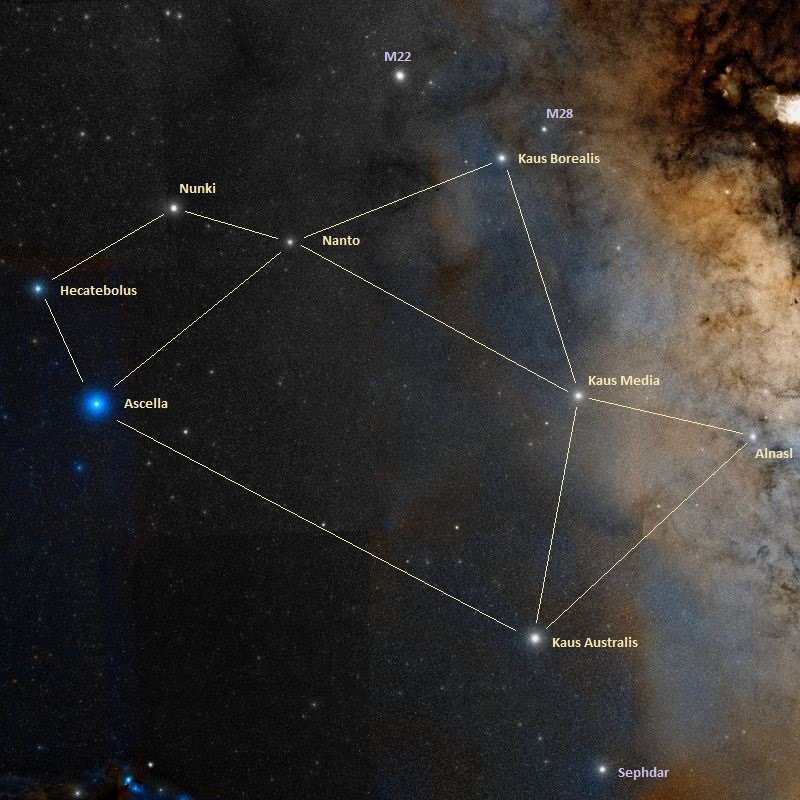
The Teapot
The Teapot asterism is formed by some of the brightest stars in the Sagittarius constellation — Delta, Epsilon, Gamma-2, Lambda, Zeta, Phi, Tau and Sigma Sagittarii.
Sigma and Tau Sagittarii mark the handle, Delta, Epsilon, Zeta and Phi Sagittarii form the body, Lambda Sagittarii marks the lid of the teapot and Gamma-2 Sagittarii marks the top of the spout.
Terebellum
The Terebellum asterism is a quadrilateral asterism in Sagittarius. It is formed by four fourth magnitude stars, all which lie within two degrees of each other — Omega Sagittarii, 59 Sagittarii (b Sagittarii), 60 Sagittarii (A Sagittarii) and 62 Sagittarii (c Sagittarii).
Omega Sagittarii is a G-type subgiant that marks the northeast corner of the Terebellum, while 59 Sagittarii is a K-type bright giant that marks the southeast corner. 60 Sagittarii is a G-type giant that marks the northwest corner and 62 Sagittarii is an M-type giant at the southwest corner of the asterism.
Deep Sky Objects
There are a number of interesting deep sky objects in the constellation of Sagittarius, including Messier objects and galaxies.
Sagittarius A
Sagittarius A is a radio source that is located at the center of the Milky Way, consisting of the supernova remnant Sagittarius A East, the spiral structure Sagittarius A West, and a bright radio source located at the centre of the spiral, Sagittarius A*. The view of Sagittarius A is obscured by large cosmic dust clouds in the galaxy’s spiral arms.
Sagittarius A East originated in an explosion that occurred between 35,000 and 100,000 years ago. It is about 25 light years wide. Sagittarius A West appears like a three-arm spiral and is sometimes called the Minispiral. It is made of clouds of dust and gas with an ionized surface. Sagittarius A* is thought to be the location of the supermassive black hole believed to be at the centre of the Milky Way Galaxy. This is because stars orbit the object at speeds greater than those of any other stars found in the Milky Way.
Sagittarius B2
Sagittarius B2 is a large molecular cloud of dust and gas that spans 150 light years across and is one of the largest molecular clouds in our galaxy. It is also the single largest one in the vicinity of the galaxy’s core. With a mass three million times that of the Sun, it is approximately 390 light years from the centre of the Milky Way.
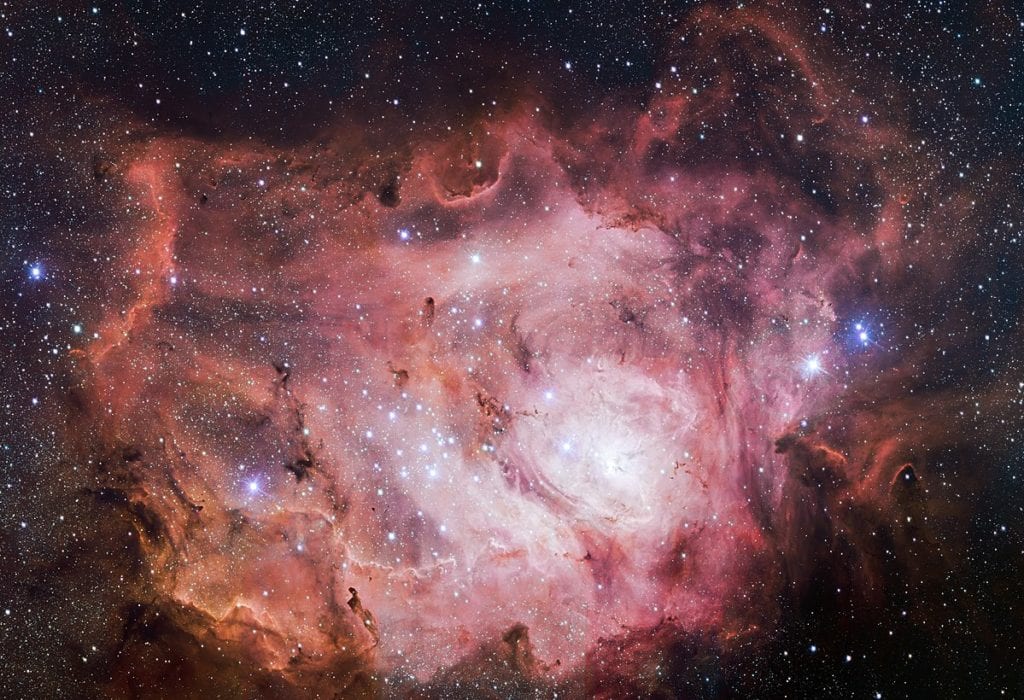
Lagoon Nebula
Lagoon Nebula, also known as Messier 8, M8 or NGC 6523, is a large interstellar cloud classified as an emission nebula, with an apparent magnitude of 6.0. It is one of the H II regions in Sagittarius and one of only two nebulae that are star forming regions and can be seen by naked eye.
NGC 6523 is around 4,100 light years away from us. In the center of the Messier object, there is a structure known as the Hourglass Nebula that contains several Herbig-Haro objects, small patches of nebulosity indicating that there are newly born stars in the vicinity.
Messier 8 was first discovered by the French astronomer Guillaume Le Gentil in 1747.
NGC 6530
NGC 6530 is an open cluster located in the Lagoon Nebula, discovered by Italian astronomer Giovanni Battista Hodierna in 1654. The cluster has a diameter of 10 arc minutes and an apparent magnitude of 4.6, with the brightest stars in the cluster being of 7th magnitude.
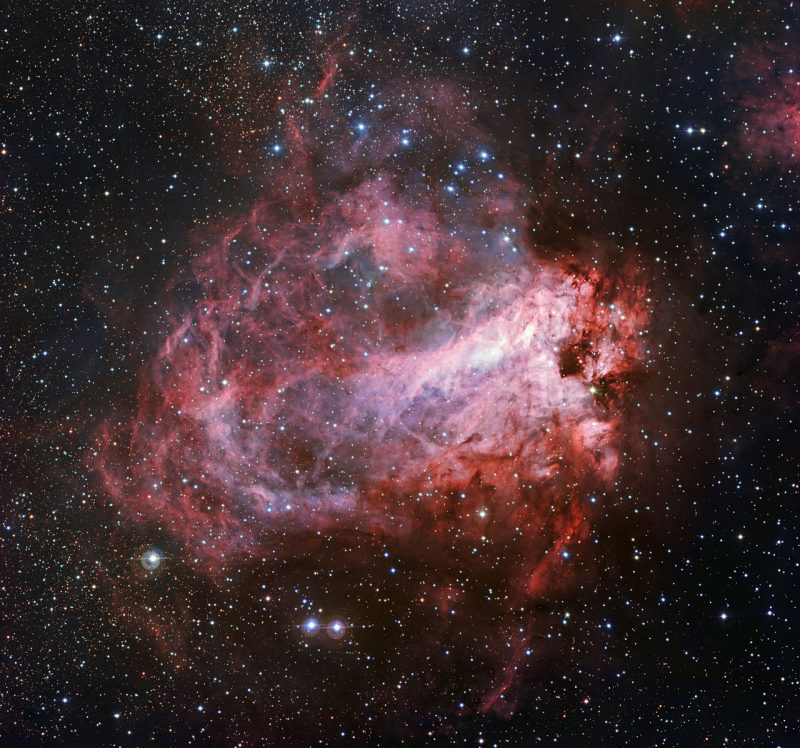
Omega Nebula
The Omega Nebula, also known as Messier 17, M17, NGC 6618, Swan, Horseshoe or Lobster Nebula, is an emission nebula that is located in the H II region. It was originally discovered by the Swiss astronomer Jean-Philippe Loys De Chéseaux in 1745, but Messier included it in his catalogue in 1764.
Messier 17 has an apparent magnitude of 6.0 and contains an open cluster of 35 hot young stars which illuminate its gases. It is located between 5,000 and 6,000 light years away from us and is about 15 light years in diameter.
Messier 18
Messier 18, also known as M18 or NGC 6613, an open star cluster with an apparent magnitude of 7.5. It was originally discovered by Charles Messier in 1764 and is located approximately 4,900 light years away from us, between the Sagittarius Star Cloud (Messier 24) and the Omega Nebula (Messier 17).
Messier 18 is nine light years in radius and is thought to be about 32 million years old.
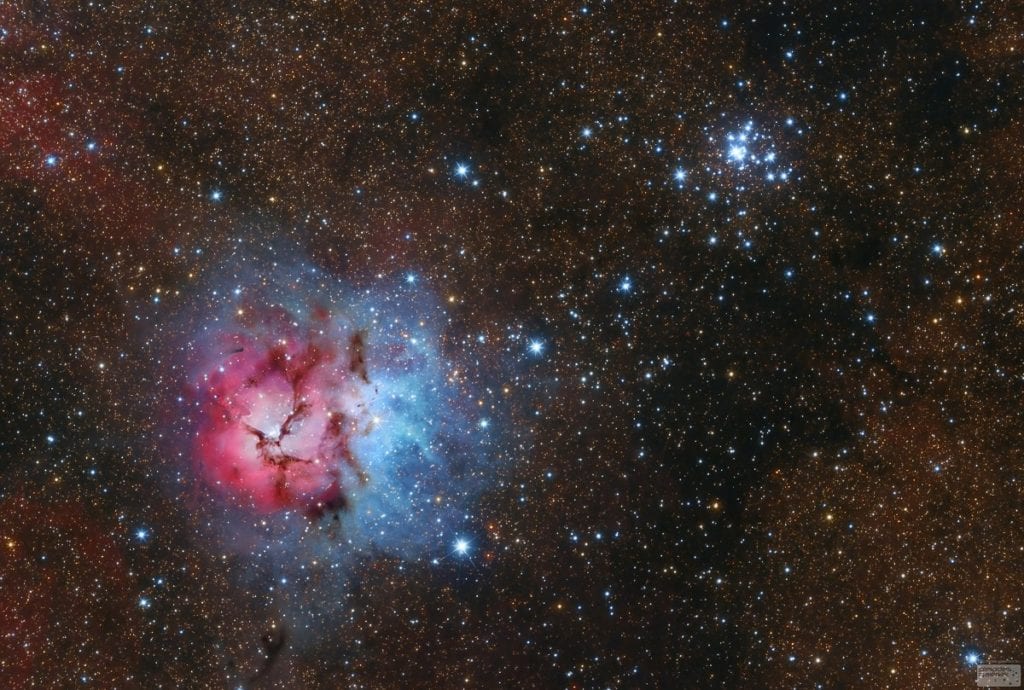
Trifid Nebula
The Trifid Nebula, also known as Messier 20, M20 or NGC 6514, is a bright, colourful emission and reflection nebula. The bottom part of the nebula is an emission nebula and the upper part is a reflection nebula. There is also an open cluster. It can be observed through a small telescope.
The Trifid Nebula has an apparent magnitude of 6.3 and is an H II region, containing a stellar nursery full of embryonic stars. It is located around 5,200 light years away from us and is about 28 arc minutes across in size.
Messier 21
Messier 21, also known as M21 or NGC 6531, is an open star cluster that was first discovered by Charles Messier in June 1764. It is a relatively young cluster, only 4.6 million years old, and it contains at least 57 stars.
Messier 21 has an apparent magnitude of 6.5. It is located around 4,250 light years from Earth.
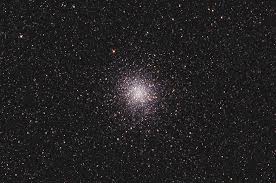
Sagittarius Cluster
Sagittarius Cluster, also known as Messier 22, M22 or NGC 6656, is one of the brightest globular star clusters in the sky and has an apparent magnitude of 5.1. It is elliptical in shape and one of the nearest globular star clusters to Earth, around 10,600 light years away. Sagittarius Cluster is about 32 arc minutes across in size and is located near the galactic bulge, the central group of stars in the Milky Way.
Messier 22 is notable for being one of only four known globular clusters that contain a planetary nebula. It was originally discovered by the German amateur astronomer Johann Abraham Ihle in 1665, and then Messier included the cluster in his catalogue in June 1764.
Messier 23
Messier 23, also known as M23 or NGC 6494, is an open star cluster that has an apparent magnitude of 6.9. It is thought to be around 220 million years old and was first discovered in June 1764 by Charles Messier.
Messier 23 is about 2,150 light years away from us and is 15-20 light years in radius. It contains around 150 stars, and the brightest one has a magnitude of 9.2.
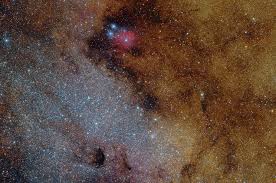
Sagittarius Star Cloud (Delle Caustiche)
Sagittarius Star Cloud, also known as Delle Caustiche, Messier 24, M24, NGC 6603 or IC 4715, is a star cloud and the densest concentration of stars that can be seen using quality binoculars. Around a thousand stars can be seen within a single field of view.
The Sagittarius Star Cloud was first discovered in 1764 by Charles Messier. It is part of the Sagittarius or Sagittarius-Carina spiral arms of the Milky Way. The Messier 24 object is about 600 light years wide and is located around 10,000 light years away from us.
Messier 25
Messier 25, also known as M25 or IC 4725, is an open cluster that is located around 2,000 light years from Earth. It was first discovered by Philippe Loys De Chéseaux in 1745 and then added to Messier’s catalogue in 1764.
Messier 25 has an apparent magnitude of 4.6 and measures around 19 light years across. It is thought to be at leats 90 million years old.
Messier 28
Messier 28, also known as M28 or NGC 6626, is a globular cluster that has an apparent magnitude of 7.66. It contains 18 RR Lyrae type variable stars which are pulsating stars belonging to the spectral class A (and occasionally F). The stars usually have a mass of about half the Sun’s.
Messier 28 is located around 8,000 and 19,000 light years from us, near Lambda Sagittarii (Kaus Borealis).
Messier 54
The Messier 54 object, also known as M54 or NGC 6715, is a dense globular cluster that was discovered by Charles Messier in 1778. It is located 87,400 light years away from us, lying close to the star Zeta Sagittarii. It also belongs to the Sagittarius Dwarf Elliptical Galaxy.
M54 has an apparent magnitude of 8.37 and measures about 150 light years across.
Messier 55
Messier 55, also known as M55 and NGC 6809, is a globular cluster that was first discovered by the French astronomer Nicolas Louis de Lacaille in 1751 and then included by Messier in his catalogue in 1778.
It has an apparent magnitude of 7.42 and is relatively large. It is located around 17,300 light years from Earth.
Messier 69
Messier 69, also known as M69 or NGC 6637, is a globular cluster that was first discovered by Charles Messier on August 31, 1780. It was discovered at the same time as Messier 70, below. Messier 69 is only 1,800 light years away from Messier 70, located around 29,700 light years distant from Earth near the Galactic center.
Messier 69 has an apparent magnitude of 8.31 and contains very few variable stars. It has a radius that is 42 light years across.
Messier 70
Messier 70, also known as M70 or NGC 6681, is a globular cluster that was discovered by Charles Messier on August 31, 1780, as the same times as M69. It is located near to the Galactic center, around 29,300 light years from Earth.
It has an apparent magnitude of 9.06 and a radius of 34 light years.
Messier 75
Messier 75, also known as M75 or NGC 6864, is a globular star cluster that was first discovered by the French astronomer Pierre Méchain in 1780. It is located around 67,500 light years from Earth and has an apparent magnitude of 9.18. It is also around 67 light years in radius and is densely populated.
Sagittarius Dwarf Elliptical Galaxy
The Sagittarius Dwarf Elliptical Galaxy, also known as Sag DEG, is an elliptical galaxy shaped like a loop. It is a satellite galaxy of the Milky Way and headed for a collision with our galaxy, and is believed to already have orbited the Milky Way about 10 times in the last billion years or so.
Sag DEG has an apparent magnitude of 4.5 and is about 10,000 light years in diameter. It consists of four globular star clusters, yet is an old galaxy, composed mainly of Population II stars. It is located around 65,000 light years from Earth and 50,000 light years from the center of the Milky Way.
Sagittarius Dwarf Irregular Galaxy
The Sagittarius Dwarf Irregular Galaxy, also known as Sag DIG, is a dwarf galaxy that was discovered on a photographic plate taken for the ESO Atlas in June 1977. It is one of the most metal-poor galaxies known and contains mainly intermediate-age stars as a result of a prolonged period of star formation.
Sag DIG has an apparent magnitude of 15.5 and is located around 3.39 million light years from the Solar System.
NGC 6565
NGC 6565 is a planetary nebula first discovered by Edward Charles Pickering on July 14, 1880. It is located around 14,000 light years away and has an apparent size of only 10 by 8 arc seconds. As a planetary nebula, it is a cloud of gas expelled by a dying central star.
Deep sky NGC 6565 has an apparent magnitude of 13 and has also been catalogued as ESO 456-70.
NGC 6578
NGC 6578 is a planetary nebula that was first discovered by Edward Charles Pickering on August 18, 1882. It has an apparent magnitude of 13.5 and is located around 7,800 light years from Earth, near he star 16 Sagittarii. It has a 16th magnitude central star and occupies an area of 8 arc seconds.
NGC 6522
NGC 6522 is a globular cluster that was discovered by William Herschel on 24 June, 1784. It is thought to be more than 12 billion years old, making it one of the oldest known clusters in the Milky Way.
NGC 6522 has an apparent magnitude of 10.5, with the brightest stars in the cluster being 16th magnitude. It is located 25,100 light years from Earth, lying in an area of the sky known as Baade’s Window. It occupies an area of 2′ of apparent sky.
NGC 6528
NGC 6528 is a globular cluster was discovered by William Herschel in 1784 using an 18-inch telescope. It has an apparent magnitude of 10.65, with the brightest stars in the cluster being 16th magnitude.
This object is located 25,800 light years away from Earth, located just to the southwest of NGC 6522. It measures 8.3′ by 8.3′ in diameter.
NGC 6723
NGC 6723 is a globular star cluster that was first discovered by James Dunlop on June 2, 1826. It is located 28,400 light years from Earth, near the border with Corona Australis. It is thought to be at least 13.06 billion years old.
NGC 6723 has an apparent magnitude of 6.8 and spans about 65 light years, occupying about 11 arc minutes of the apparent sky.
NGC 6589
The deep sky object NGC 6589 is a reflection nebula that was discovered by Truman Safford on 28 August, 1867. Edward Barnard then catalogued it as IC 4690 in August 1905. It occupies an area of 5.0′ by 3.0′ in apparent size.
NGC 6544
NGC 6544 is a globular cluster that was discovered by William Herschel in 1784. It is located 9,450 light years from Earth, less than a degree southeast of the Lagoon Nebula. It has an apparent magnitude of 9 and is only 1 arc minute in diameter, therefore considered a small cluster.
NGC 6440
NGC 6440 is a globular cluster discovered by William Herschel on May 28, 1786. It has an apparent magnitude of 10.10 and is located around 27,700 light years away from us. It has a diameter of about 6 arc minutes.
NGC 6559
NGC 6559 is a star-forming region, consisting of emission and reflection nebulae and dark absorption nebulae. It is located around 5,000 light years from Earth, about a degree to the east of Messier 8.
NGC 6638
NGC 6638 is a class VI globular cluster that was discovered by William Herschel in 1784. It has an apparent magnitude of 9.5 and occupies an area of 2 arc minutes about half a degree to the east of Lambda Sagittarii.
NGC 6624
NGC 6624 is a globular cluster that was discovered by William Herschel on June 24, 1784. It has an apparent magnitude of 7.6 and contains six confirmed pulsars and a low-mass X-ray binary, which have an orbital period of only 11.5 minutes.
NGC 6624 is located 25,800 light years distant from Earth and about 3,800 light years away from the Galactic center. It occupies an area 8.8 arc minutes in size and can be seen only 0.8 degrees to the southeast of Delta Sagittarii.
NGC 6520
NGC 6520 is an open star cluster that is around 5,500 light years from Earth. It has an apparent magnitude of 9.0 and around 25 stars in the cluster are of magnitude 9 to 12. The cluster itself has an apparent size of 5 arc minutes and spans around 10 light years.
NGC 6717
NGC 6717 is a globular cluster that was discovered by William Herschel on August 7, 1784. It has an apparent magnitude of 9.28 and is located around 23,100 light years away.
NGC 6553
NGC 6553 is a globular cluster that was discovered by William Herschel on May 22, 1784. It is located 19,600 light years from Earth and just over a degree to the southeast of the Lagoon Nebula. The cluster has a visual magnitude of 8.06, while the brightest stars in the cluster are 20th magnitude. It has an apparent diameter of 8.2 arc minutes.
NGC 6558
NGC 6558 is a globular cluster that was discovered by William Herschel in 1784 using an 18.7-inch telescope. It has an apparent magnitude of 11.29 and an apparent size of 5.2′ by 5.2′. It is located 24,100 light years from Earth and can be seen 1.5 degrees to the south-southeast of Gamma-2 Sagittarii.
NGC 6569
NGC 6569 is another globular cluster that was discovered by William Herschel in 1784. It has a visual magnitude of 9.47, with the brightest stars in the cluster of magnitude 15, and an apparent diameter of 7 arc minutes. It is located 35,500 light years away from Earth, in the vicinity of Gamma-2 Sagittarii, about 2 degrees south.
NGC 6540
NGC 6540 is a globular cluster that was discovered by William Herschel on May 24, 1784. It has an apparent magnitude of 9.30 and an apparent size of 4.75′ by 4.75′. It is located around 17,300 light years from Earth.
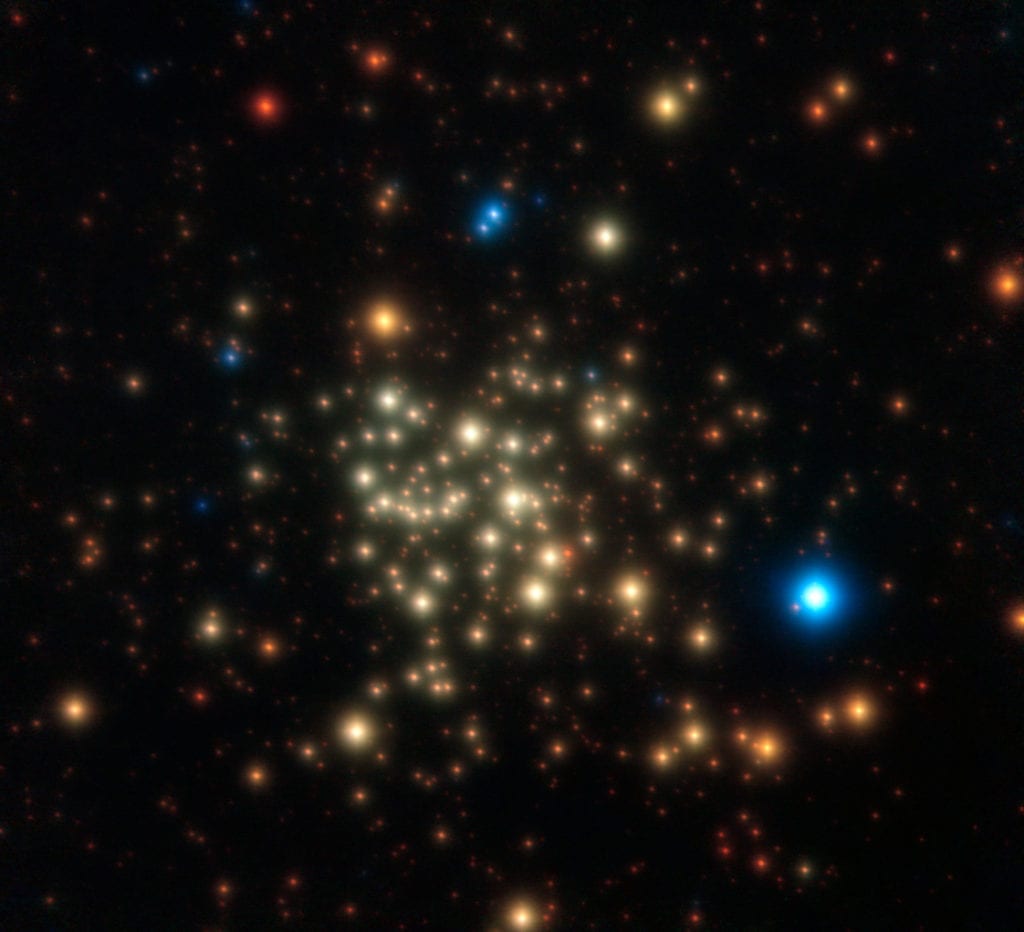
Arches Cluster
The Arches Cluster is the densest open cluster known in the Milky Way and contains some of the brightest, most massive stars in our galaxy. The most prominent stars are Wolf-Rayet stars and O-type supergiants, giving the cluster a mass that is 10,000 times that of the Sun.
The Arches Cluster is only 2.5 million years old and is located 25,000 light years from Earth, about 100 light years from the Galactic center. It is obscured by clouds of dust and therefore is only is visible in radio, infrared and x-ray wavelengths.
Quintuplet Cluster
The Quintuplet Cluster is a dense open cluster. It is located around 26,000 light years from Earth and 100 light years from the centre of the Milky Way, in the same region as the Arches Cluster. It was only discovered in 1990 and was named because of its five most prominent stars. The Quintuplet Cluster contains more Wolf-Rayet stars than any other cluster known and several notable luminous blue variables.
The Quintuplet Cluster cannot be seen but can be observed in radio, x-ray and infrared bands.
Barnard’s Galaxy
Barnard’s Galaxy, also known as NGC 6822, IC 4895 or Caldwell 57, is a barred irregular galaxy that was named after the American astronomer E.E. Barnard, who discovered it in 1881 using a six-inch refractor telescope. It has an apparent magnitude of 9.3 and is located around 1.63 million light years away from us.
NGC 6822 belongs to the Local Group of galaxies and contains 15 variable stars, 11 of which were Cepheids — luminous variable stars that have a strong relationship between luminosity and pulsation period.
The Bubble Nebula (Hubble 1925 I)
The Bubble Nebula, also known as Hubble 1925 I, is an emission nebula that contains areas of massive H II emission. It is located in Barnard’s Galaxy.
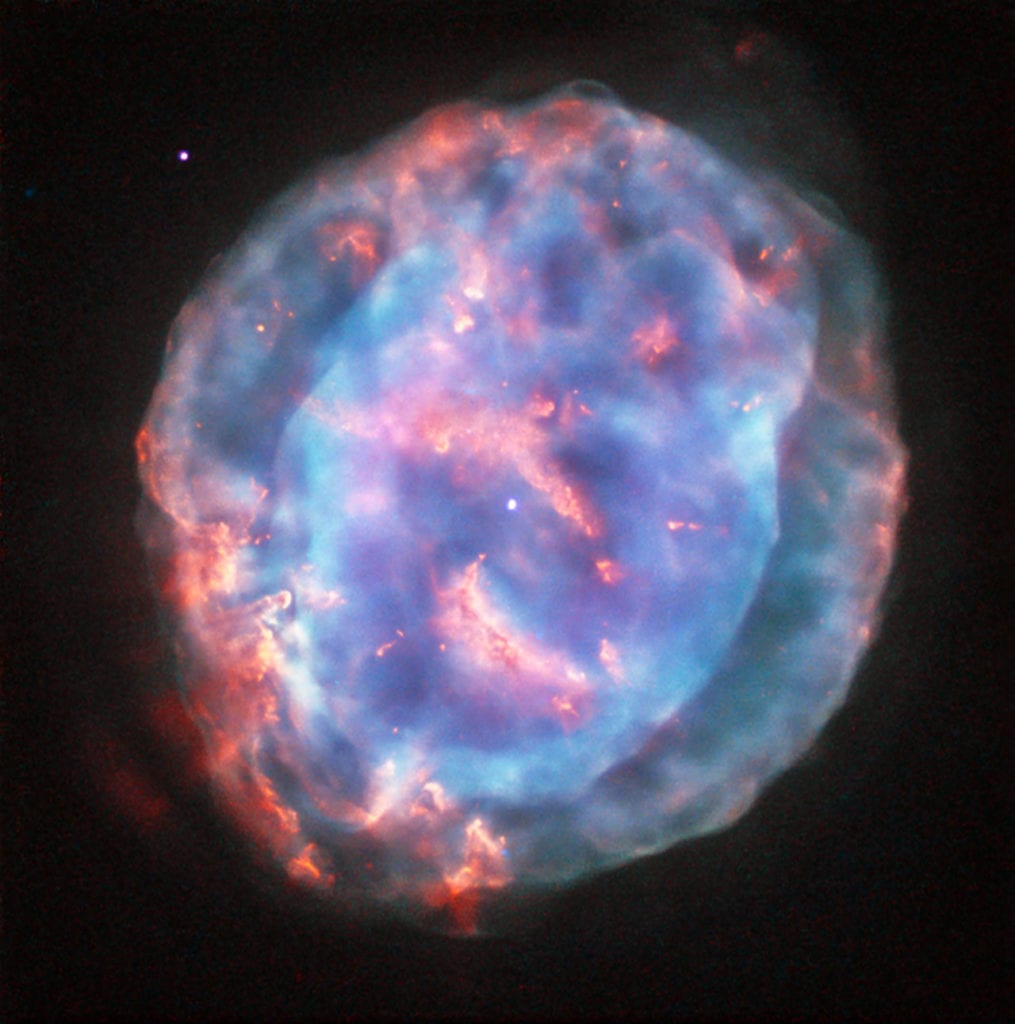
Little Gem Nebula
The Little Gem Nebula, also known as NGC 6818, is a planetary nebula that was first discovered by William Herschel in 1787. It has a magnitude of 10 and is located 6,000 light years from Earth.
The oval diameter of the Little Gem Nebula is 15 to 22 arc seconds, and its inner elongated shape is believed to be the result of a fast wind of material travelling away from the hot 15th magnitude central star.
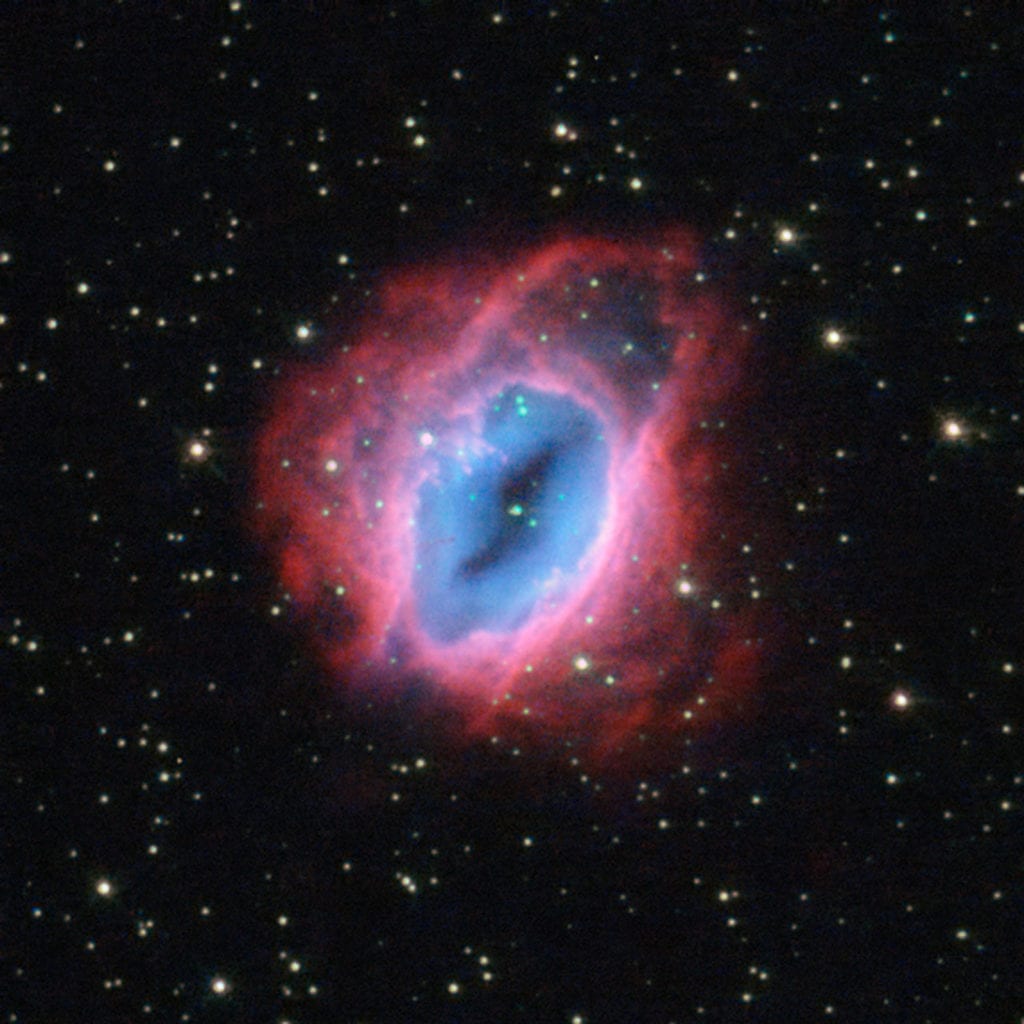
Eye of Sauron Nebula
The Eye of Sauron Nebula, also known as M 1-42, is a planetary nebula that was discovered by Rudolph Minkowski in 1946. It gets its name from its appearance which resembles an eye thanks to the various layers of material expelled by the central star. It is located around 10,000 light years from Earth.
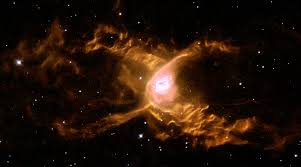
Red Spider Nebula
The Red Spider Nebula, also known as NGC 6537, is a planetary nebula. It was discovered by Edward Charles Pickering on July 15, 1882. The nebula is two-lobed and surrounds the central hot white dwarf that produces a hot wind with a speed of 300 km/s. The estimated temperature of the central star is between 150,000 and 250,000 K. This makes it one of the hottest known white dwarfs, and its apparent magnitude is 13.
The Red Spider Nebula lies at an estimated distance between 3,000 and 8,000 light years from Earth.
The Box Nebula
The Box Nebula, also known as NGC 6445, is a planetary nebula that was discovered by William Herschel on May 28, 1786. It has a visual magnitude of 11.2 and spans about 35″. It is located only 0.36 arc minutes from the cluster NGC 6440.
Henize 3-1475
Henize 3-1475, also known as IRAS 17423-1755, is a planetary nebula. It has an apparent magnitude of 12.87, with the central star being 12,000 times more luminous than the Sun. It is located approximately 18,000 light years from Earth.
Westerhout 31
Westerhout 31, also known as W31, is a massive H II region that consists of different star forming regions located at different distances. They appear together in the sky because they lie in the same line of sight when observed from Earth.
The regions are obscured by interstellar dust, but W31 can be observed in radio, infrared and X-ray bands. The most notable region is the radio-emitting nebula G10.3-0.3 that contains a supergiant, hypergiants and three Wolf-Rayet stars
1806-20
1806-20 is a star cluster that is home to many massive stars that are expected to explode as supernovas in the next few million years. It contains three Wolf-Rayet stars and an OB supergiant, yet is heavily obscured by dust but visible in infrared wavelengths.
It is located around 50,000 light years from Earth.
LBV 1806-20
LBV 1806-20 is a candidate luminous blue variable (LBV) and one of the most luminous stars in our galaxy. It has an absolute magnitude of -11 and a luminosity about 2 million times that of the Sun, but cannot be observed in visual bands because less than a billionth of its light in the visible spectrum reaches us. This means it has a 35th visual magnitude.
LBV 1806-20 is likely a binary system, with its spectral type estimated to be between O9 and B2 and may be variable. It has a mass that is 36 times that of the Sun and is located around 38,700 light years away from us.
SGR 1806-20
SGR 1806-20 is a magnetar, meaning it is a neutron star with an extremely strong magnetic field. It is actually the most highly magnetized object ever discovered. SGR 1806-20 is also a soft gamma repeater (SGR), which are objects that emit enormous bursts of gamma-rays and x-rays at irregular intervals. They are believed to be a type of magnetar.
SGR 1806-20 is located 50,000 light years from Earth on the other side of our galaxy and has a diameter of around 20 kilometers. Its rotation speed at the surface is 30,000 km/h.
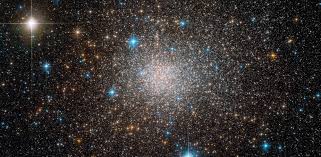
Terzan 5
Terzan 5 is a globular cluster, one of six globulars discovered by the French-Armenian astronomer Agop Terzan in 1968. It has an apparent magnitude of 12.8 and is located about 18,800 light years away in the Milky Way bulge.
The cluster is heavily obscured, with a half-mass diameter of 1’02” and linear radius of 2.7 light years. It also has a mass that is 2 million times that of the Sun and a luminosity that is 800,000 times that of the Sun.
Terzan 5 has one of the highest star densities in the Milky Way, with the small central region containing at least two generations of stars.
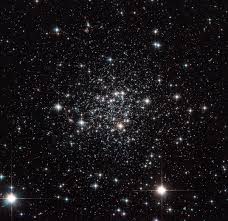
Terzan 7
The Terzan 7 globular cluster is the brightest of six globulars discovered by the French-Armenian astronomer Agop Terzan in 1968. It is located around 75,700 light years from Earth and is thought to be only 7.5 billion years old.
It has an apparent magnitude of 12, with the cluster’s center containing a particularly high concentration of blue stragglers. The cluster has a linear radius of 160 light years and occupies 7.3′ of the apparent sky.
Hurt 2
Hurt 2, also known as 2MASS-GC02, is a globular cluster that was discovered in 2000 and named after R. J. Hurt, who led the team that confirmed the discovery.
It has a magnitude of 9.30 yet cannot be seen in visual bands as a result of interstellar extinction. It was discovered in infrared observations. Hurt 2 is located 16,000 light years away from Earth, 10,400 light years from the Galactic center, and has a radius of 0.95 arc minutes.
Ruprecht 147
Ruprecht 147, also known as NGC 6774, is a dispersed open cluster that was discovered by John Herschel in 1830. It is so sparse that it was once considered to be an asterism, and is thought to be between 2.5 and 3.25 billion years old.
Ruprecht 147 is only 1,000 light years away from us and occupies an area of 60 arc minutes. It also has a radius of more than 9 light years.
Extra Facts About The Sagittarius Constellation
- In Europe north of the Pyrenees, Sagittarius drags very low along the horizon and can be difficult to see clearly.
- Up north in Scotland and Scandinavia, Sagittarius cannot be seen at all.
- In southern Brazil, South Africa, and central Australia (30° south), Sagittarius passes directly overhead.
- In classical antiquity, Capricorn was the location of the Sun at the winter solstice. Due to the precession of the equinoxes, this had shifted to Sagittarius by the time of the Roman Empire.
- The Babylonians identified Sagittarius as the god Nergal, a centaur-like creature firing an arrow from a bow.
- As of 2002, the Sun appears in the constellation Sagittarius from 18 December to 18 January.
- In tropical astrology, the Sun is considered to be in the sign Sagittarius from 22 November to 21 December.
Images:
- Sagittarius 1 – https://starregistration.
net/constellations/ sagittarius-constellation.html - Sagittarius 2 – https://www.space.com/21653-
sagittarius-constellation.html - The Teapot – https://www.constellation-
guide.com/teapot/ - Sagittarius 3 – https://benitolink.com/
constellation-of-the-month- sagittarius/ - Lagoon Nebula – https://en.wikipedia.org/
wiki/Lagoon_Nebula - Omega Nebula – https://earthsky.org/
clusters-nebulae-galaxies/m17- is-the-omega-nebula - Trifid Nebula – https://www.universetoday.
com/31733/messier-20/ - Sagittarius Cluster – https://www.messier-objects.
com/messier-22-sagittarius- cluster/ - Sagittarius Star Cloud – https://apod.nasa.gov/apod/
ap180629.html - Arches Cluster – https://en.wikipedia.org/
wiki/Arches_Cluster - Little Gem Nebula – https://www.nasa.gov/image-
feature/goddard/hubble-finds- a-little-gem - Eye of Sauron Nebula – https://en.wikipedia.org/
wiki/M_1-42 - Red Spider Nebula – https://www.nasa.gov/image-
feature/goddard/2016/hubble- spins-a-web-into-a-giant-red- spider-nebula/ - Terzan 5 – https://en.wikipedia.org/
wiki/Terzan_5 - Terzan 7 – https://en.wikipedia.org/
wiki/Terzan_7